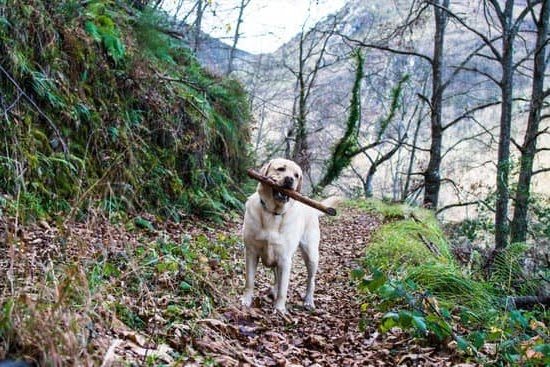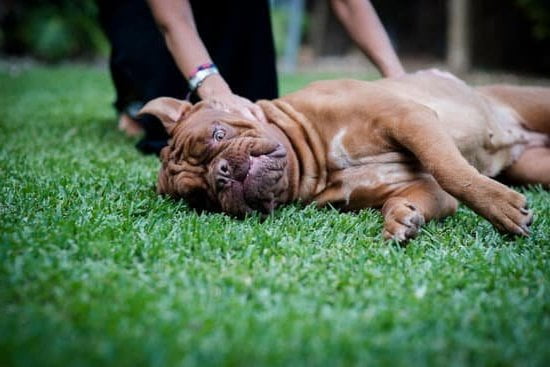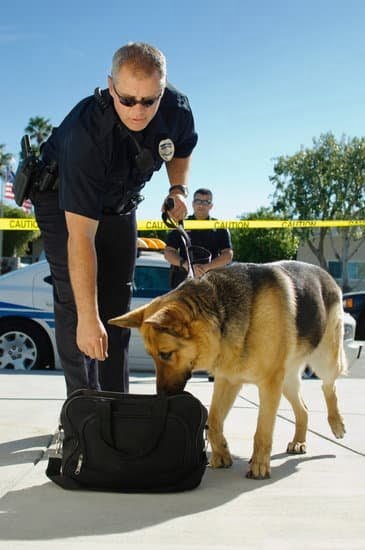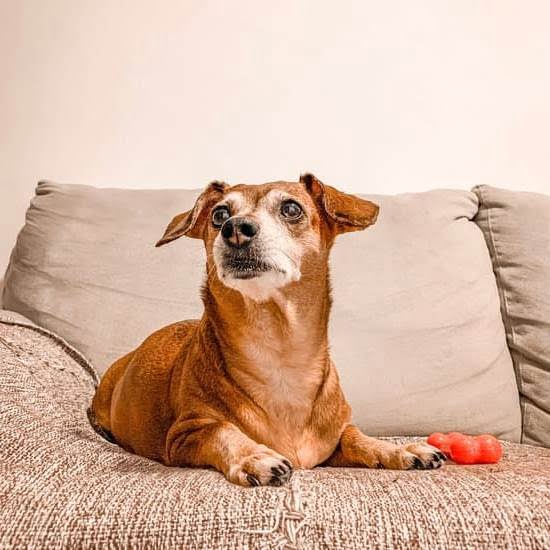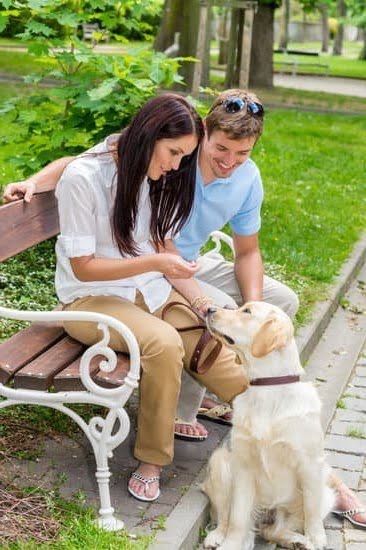Introduction
Dog equipment training is a form of dog training that uses specially designed tools and accessories to help your dog learn the behaviors that you are trying to teach them. It is important to use the correct equipment when training your dog so that you can ensure your pup gets the most out of their training session. The most common type of equipment used for dog training includes leashes, collars, treats, toys, and clickers. All of these items play an important role in helping to keep a positive learning experience for both you and your pup.
A properly fitting collar or harness is probably the first piece of equipment you will want to get when you start dog training. The collar should be snug but not too tight, as it should allow your pup some move but also discourage pulling or jumping up on people while they are being trained.
Using treats appropriately is also essential during dog equipment training. This allows you to reward good behavior and encourage more desirable ones in order to successfully shape your pup’s behavior. However, treats should not be used as a bribe just to get desired results; instead they should be given after or during a successful session so they become associated with the behavior being taught.
Lastly, one of the best tools that you can have when teaching your pup something new is a Clicker. A Clickers simple sound can be associated by your pet with doing something right which encourages them to work harder for praise as well as rewards like treats or toy playtime. It also acts as an effective way for communication between both yourself and your pet during the teaching sessions by making very clear when certain behaviors are being praised or corrected.
Pros and Cons of Different Dog Training Equipment
There are many different types of equipment used for dog training, and the pros and cons can vary from type to type. Here is a look at some of the most popular equipment and their respective pros and cons:
Leashes – Leashes are probably the most commonly used dog training equipment, as they provide owners with control and give dogs boundaries. Pros include better safety, as walking with a leash keeps them secure in public places; providing structure as it gives commands on where they can go; giving dogs a sense of security since they do not have to venture too far away from you; and allowing owners to help train basic manners such as walking without pulling. Cons include if the leash is too restrictive, it may lead to aggression or anxiety; the ability of an unruly dog to pull or tug at their lead may bother other people in crowded areas; and, if using an extendable lead, too much slack might allow dogs too much freedom which could lead them into danger.
Collars & Harnesses – Collars/harnesses are used for more than just stylistic appeal for your pup. Pros of these include providing secure restraint when walking your dog by establishing a direct connection between you and your pup, protecting their neck from unnecessary strain during walks, easy to put on compared to muzzles or boots, plus depending on the harness design it provides an opportunity for pups who pull excessively on leashes to be properly trained not to pull through positional correction techniques. Cons include improper sizing which can lead to uncomfortable chafing; potential for matting around the neck due to poor fitting collars/harnesses; harsh corrections causing fear or behavioral issues in pups that are overly sensitive; and cheap/flimsy materials which can cause lasting injury through strain or cutting into skin.
Exploring the Use of Treats and Rewards in Dog Training
Treats and rewards are often utilized in dog training, as they provide an effective form of positive reinforcement. Dogs will naturally strive to please owners and when treats are given, it subconsciously tells the dog that they did something right. This helps them to learn better and more quickly and can even increase engagement during training sessions. Additionally, using treats can be beneficial for owners because it generates excitement in the dog and teaches them that associating behavior with rewards results in a positive outcome.
In addition to providing treats or rewards, the use of praise and encouragement should also be included in any type of dog training program. Positive reinforcement is an excellent way to reward good behavior and let your pet know that you are pleased with their efforts. Words of support, petting, or even just a hug can make all the difference when it comes to teaching your pup new skills and reinforcing previous lessons. Making sure that your canine knows that their hard work is appreciated will encourage them to keep up their enthusiasm for learning – which may even lead to further accomplishments! Other important aspects of training include setting goals, developing consistency within commands, building routines, and choosing the right environment for practice – all of which should involve some degree of ongoing feedback from the trainer on what works best for each individual pup.
Teaching the Proper Techniques for Fitting Dog Equipment
Having the right equipment is essential for successful dog training. Properly fitting and using dog equipment can help ensure that your pet is safe, comfortable and able to learn effectively. Dog owners should take the time to learn the proper techniques for fitting equipment such as collars, harnesses, leashes, and muzzles.
When selecting a collar for walking or training sessions, it is important to measure around the base of the neck where the canine’s fur ends for an accurate fit. If the collar slips over their head too easily it will be too loose, leading to possible escape attempts. Additionally, if the collar is too tight it may cause discomfort or abrasions from rubbing and pulling on their delicate skin as they move. Once properly fitted on your canine companion it should have just enough slack to allow two fingers between the muzzle and collar when gently pulled.
Harnesses are also great tools for more effective control during walks or other outings with your pup. When purchasing a harness there are different styles available that vary in form and function based on intended use. For example, some harnesses may feature additional padding around particulate pressure points while others do not include this feature but instead provide better overall stability when attached to a leash. Whichever style you prefer make sure to measure between both front legs at its widest point before buying – this will help ensure proper fit without compromising comfort or safety during these outdoor activities with your best friend.
Finally, stay away from any type of choke collar as these can injure both large and small dogs alike during walks or training sessions if care is not taken with its usage. Not only can these devices result in physical damage but also psychological trauma from sudden jerking motions that could occur suddenly when improperly used by their handler or trainer. Foster an environment of positive reinforcement rather than punishment with specialized dog equipment accessories meant for advanced levels of professional instruction such as clickers or target sticks that can offer endless stimulation opportunities for your pooch!
Storing and Maintaining Dog Training Equipment
When it comes to storing and maintaining dog training equipment, there are a few key steps you should take to ensure the best performance and longevity of your tools. First, you should make sure to keep all your equipment clean and in good condition. Wash and oil any leather parts regularly to keep them looking their best. Keep metal pieces free of rust by cleaning them with a cloth and some mild soap or vinegar solution. For electric products, check for any loose parts and make sure the wires are in good condition before each use.
Replacing worn out dog training equipment is also important. Keep an eye out for frayed leashes, cracked bits or collar snaps, or any other signs that items need replaced when setting up for each session. Store all spare pieces including batteries, remotes, chargers, etc., in a labeled bag so they’re easy to locate when needed. Finally, ensure all hardware is securely tightened whenever possible so no items can escape during use or storage. Follow these easy steps and you’ll be able to enjoy your favorite dog training supplies for years!
Implementing a Positive Training Environment with Dog Equipment
Dog equipment training is an important part of creating an effective and safe environment for both pet parents and their dogs. Common dog behavior can be managed through positive reinforcement of desired behaviors and the use of appropriate training tools such as slip leads, harnesses, head halters and bark collars. Dog owners should always be aware of the proper use, fit and selection of tools needed in order to optimize the potential of successful outcomes with their pet.
When using any type of restraining device such as a leash or head halter, it must always stay loose enough so that the dog does not feel choked or cornered in any way. It is also important to designate some time with your pet each day where you do not use any type of device but rather interact intimately with your pet through gentle verbal cues and treats. This will help build a relationship built on trust, appreciation and understanding between your pet and yourself.
In order to achieve the best results while training with dog equipment, you must also establish clear rules that are consistently enforced by all involved parties. If a rule isn’t obeyed, then negative consequence (such as loss off freedom) should follow in order to get the point across in a very direct manner. Active rewards offer visible recognition, which helps solidify learning quickly when compared to passive rewards which require analysis before being presented accordingly. You should also avoid using aggressive motivational tactics (such as physical punishment) when trying to reinforce behaviors when using dog equipment.
Carefully Introducing Dogs to New Types of Equipment
When introducing a dog to new equipment, it is important to take your time and be patient. Start by introducing the dog to the equipment slowly and at a distance. Make sure to provide plenty of praise and rewards when the dog shows interest in the equipment.
Next, gradually move closer with the equipment, making sure that you’re rewarding positive responses along the way. Once your dog feels comfortable near the equipment, you can begin giving more specific commands and teaching them how to use it correctly. If necessary, put treats or toys on or inside of the item as an incentive for your pup to investigate further.
If you’re introducing your pet to grooming tools like a brush or nail clippers, allow them to sniff them and inspect them first before attempting any contact with them. Give your puppy treats whenever they show interest in interacting with the items and reward them for responding positively. Gradually introduce more contact until they’re comfortable enough for grooming sessions.
Overall, it is important not to rush the process too much when introducing dogs to new pieces of equipment or certain tasks that require using those items. Take your time so that your pup is able to adjust without feeling overwhelmed or anxious about unfamiliar objects or situations. With patience and dedication from both you and your pup, training with new pieces of equipment can go smoothly!
Common Mistakes to Avoid in Obedience Training with Equipment
One of the most common mistakes made when training dogs with equipment is using physical punishment. Too often, people assume that jerking on a dog’s leash or collar, using an electric shock collar, or punishing them with long time-outs will teach them obedience. In reality, it does not help the dog learn; instead it can create fear and confusion. This can ultimately lead to more problem behaviors in the future.
The best way to accurately and successfully train a dog is to use positive reinforcement techniques such as praising and rewarding good behavior. When rewarding behavior with praise, treats, or toys make sure they are appropriate for your particular dog as some might have allergies to certain foods. Furthermore, make sure to use clear commands and cue words like “sit” so that the dog can distinguish different requests quickly and obey them correctly.
Another mistake often made during obedience training is allowing too much “free play” before focusing on commands. Though it may be important to give a dog time to play so they remember why they love learning, obedience lessons should be kept short and focused on education not free play time. Prior to starting any type of formal obedience lesson make sure your lead/collar fit properly and isn’t too tight/loose as this can distract from their listening abilities. Finally, ensure you remain consistent in level tones when giving instructions so that the same command does not signal different things each time causing confusion for the pup!
Different Methods of Training Dogs with Equipment
Dog equipment training involves the use of specific tools or items to train dogs effectively. Some common examples of these tools include clickers, leashes, grooming equipment and toys. Each item can offer results when used in the appropriate manner.
One method for dog training with equipment is positive reinforcement. Positive reinforcement is a type of reward-based training which rewards desirable behaviors with treats, praise and/or other incentives. This type of training requires consistency for the best results and can be used in combination with verbal cues, actions and hand signals to teach correct behaviors.
Using leashes during training is another very effective way to raise the discipline of a dog. Leash walking can be used to control an untrained pup’s range of motion, as well as no pulling on the leash while walking outside. Grooming tools like combs and brushes also help young dogs become familiarized with different types of physical contact they may not have experienced prior to being trained or adopted by their owners.
Outdoor obstacle courses are also great options for providing hands-on learning experiences for dogs in order to foster understanding of basic commands such as “sit”, “stay”, and “come”. Obstacle courses allow puppies to interact with their environments while learning rules within the safety that comes from a clued in owner who sets specific boundaries aheads which they must respect if they wish to receive rewards afterward.
Lastly, using toys during dog training is an age-old concept that still works extremely well today. Toys for high value reward purposefully play into canine senses such as smell and sight (balls) as well providing mental stimulation through problem solving games such as hide-and seek style hideaways where kibble or treats must be found after being hidden beneath various objects. Not only do these activities get them exercising but they are also good ways to bring out your pup’s natural curiosity while deviating from repetitive conventional methods like leash walking or sit/stay drills which tend lose effectiveness over time when relied under too heavily by trainers
Conclusion
With the right equipment and dedication, anyone can become an expert dog trainer. This is not something that you can master overnight but rather something that takes time, patience and knowledge of both the species and the equipment used to conduct training exercises. A good starting point is to invest in humane training collars, leashes, treats, clickers and other items. When it comes to effective dog training, having and using somebody else’s opinion on a product or technique is always advisable. Acquiring the appropriate resources of high quality can save endless amounts of trouble while providing you with professionalism. With the acquisition of these items mentioned above as well as the proper guidance from experienced trainers, it’s possible to become a successful individual in the line of dog training!

Welcome to the blog! I am a professional dog trainer and have been working with dogs for many years. In this blog, I will be discussing various topics related to dog training, including tips, tricks, and advice. I hope you find this information helpful and informative. Thanks for reading!

